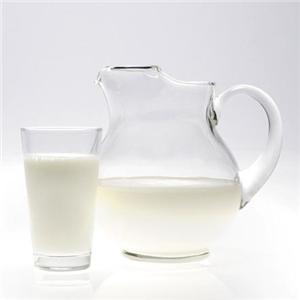Restrictions on milk and beef production in China: causes and consequences
CHINA , as one of the largest agricultural producing countries, faces serious challenges in the livestock industry. According to the latest data, representatives of the Chinese Ministry of Agriculture have become aware of plans to limit the production of MILK and beef. These measures are aimed at stabilizing prices and supporting local producers who are experiencing difficulties due to falling demand and increasing production.
The fall in prices and its reasons
According to information provided by REUTERS , prices for pork, beef , dairy products and poultry in China continue to decline. This is due to the general economic slowdown, which is forcing consumers to reduce their food spending . Specifically, beef and raw milk prices fell 12.1% and 12.5%, respectively, in the first half of 2023. Economic realities are forcing consumers to reconsider their habits, resulting in reduced demand for MEAT and dairy products.
At the same time, increasing production in the livestock sector is aggravating the situation. In the first half of the year, total milk production in the country increased by 3.4%, which, it would seem, should have contributed to rising prices. However, excess supply, combined with falling demand, leads to significant losses for producers.
Measures to support producers
In response to the current situation, the Chinese Ministry of Agriculture plans to take a number of measures aimed at optimizing and adjusting the structure of the herd. In particular, we are talking about eliminating old and low-productive cows from production, which will improve the overall efficiency of livestock farming. Chief specialist of the livestock department Wang Lejun noted that these measures will help not only reduce costs, but also improve product quality.
In addition, the government is considering providing subsidies and other forms of support to dairy and beef farmers. This may include financial assistance, training in more efficient farming techniques and access to new markets.
Long-term implications for the industry
Restrictions on milk and beef production could lead to changes in market structure in China. On the one hand, this can help stabilize prices and improve the financial position of producers. On the other hand, such measures could cause shortages in the future if demand for meat and milk recovers from the economic downturn.
It is also worth noting that changing herd structure and optimizing production can be important steps towards more sustainable agriculture. In the context of global climate change and population growth, efficient use of resources and reducing negative environmental impacts are becoming priorities for many countries, including China.
The situation with milk and beef production in China highlights the importance of flexibility and adaptability in agricultural policy. The measures taken can have a significant impact on the market, but their successful implementation will require an integrated approach and close cooperation between the government and manufacturers. In a changing economy, supporting local farmers and optimizing production will be key to ensuring food security and sustainable development of the livestock industry in China.
Read together with it:
- The IEA sees a risk of a decline in oil production in Russia due to sanctions.The IEA sees a risk of reduced oil production in RUSSIA due to US sanctions , but maintains its production forecast. According to the IEA, Russian oil exports will remain unchanged.There is a "significant downside risk" to Russia's oil production forecast due to US sanctions, the International Energy Agency (IEA) said in a report.BLOOMBERG . The agency's experts believe that the latest US sanction...
- UniCredit заявил о галактических усилиях из-за санкций против РоссииUniCredit старается не нарушить «более 15 тыс. санкций», а также не «совершать ошибки», которые позволят изъять его активы в России, заявил гендиректор. После начала военной операции банк начал рассматривать возможность ухода Итальянский банк UniCredit прилагает «галактические усилия», пытаясь соблюсти международные санкции в отношении своего российского подразделения. Об этом заявил генеральный д...
- He crawled to the icon with prayer. The true story of a man who overcame drug addiction.Alexander Ovchinnikov. Topic News. Our project's hero was a drug addict for many years. The thought that this was a dead end never left him, but his addiction proved stronger. One day, when he could no longer walk, he crawled to an icon in prayer. This became his first step toward a new life. Today, he heads a charity center that helps those who have given up hope and are unable to quit ALCOHOL an...
- Низкое предложение и устойчивый спрос: в Аргентине растут цены на мясоЦены на говядину снова выросли, что отразилось на полках супермаркетов и в мясных магазинах. За последние две недели розничные цены выросли на 8–12%, а на некоторые популярные отрубы рост превысил 15% по сравнению с октябрем. Тем не менее, продажи остаются высокими: потребители продолжают покупать, принимая новые цены и закрепляя тенденцию, которая повторяется каждый год в конце года, когда спрос ...
- Колумбия: При экспорте скота сертификация и прослеживаемость больше не являются необязательнымиВысококачественное животноводство, особенно при экспорте, требует сертификации и прослеживаемости. Это необходимые условия для выхода и конкуренции на многих международных рынках, а также на некоторых всё более требовательных внутренних рынках. Колумбийское животноводство не является исключением из этих правил, и, хотя предстоит ещё многое сделать, всё большее число ферм и компаний внедряют эти ме...
- Китайский рынок мяса: консолидация, меры безопасности и проблема субпродуктов«Мы завершаем выставку CIIE в Шанхае, в целом хорошую выставку, где мы видим консолидированные цены, как это было с начала года, но в то же время рынок ожидает решения по защитной мере, определения которой должны быть даны в конце ноября», — сказал он Valor Agregado Agro. Лидер пояснил, что глобальная ситуация характеризуется «колебаниями на международном рынке, вызванными интенсивной геополитичес...



